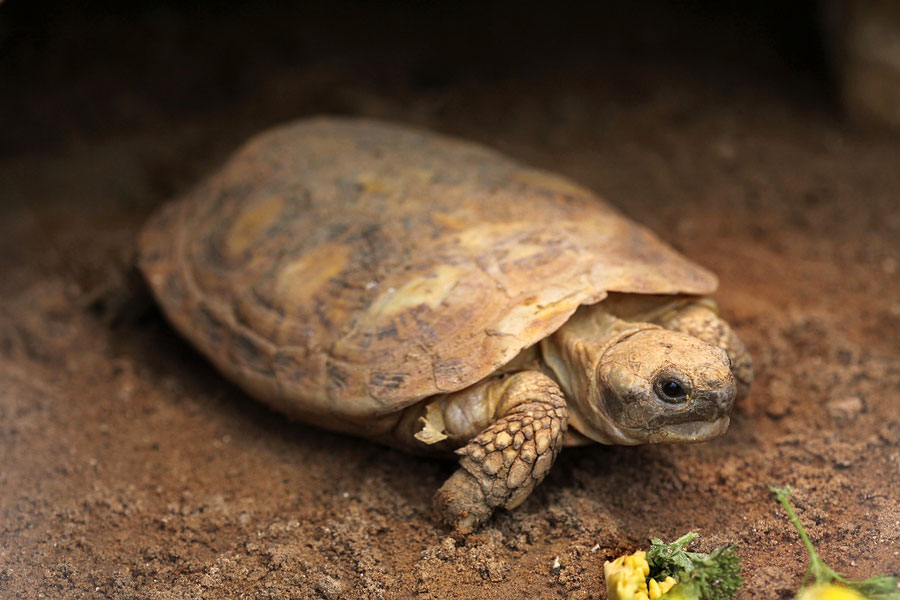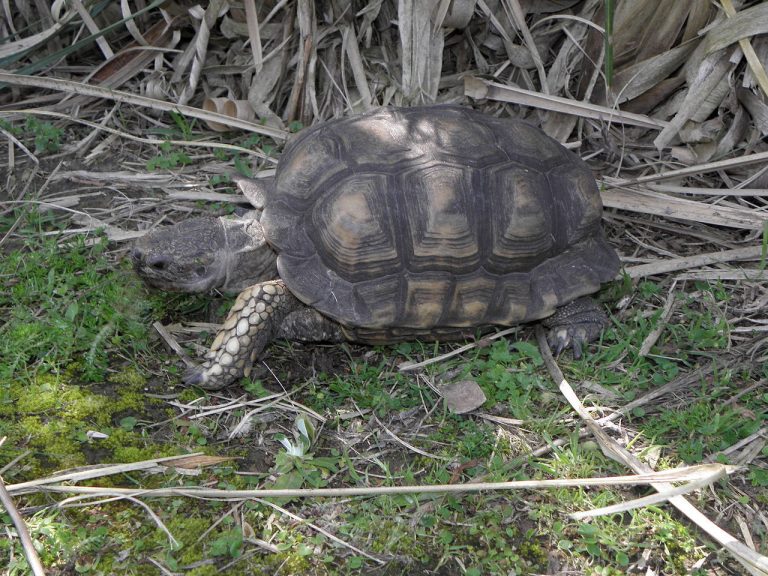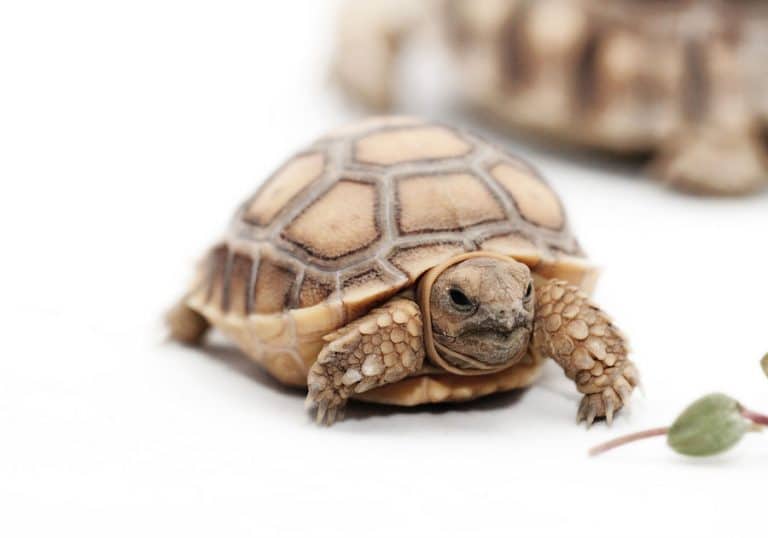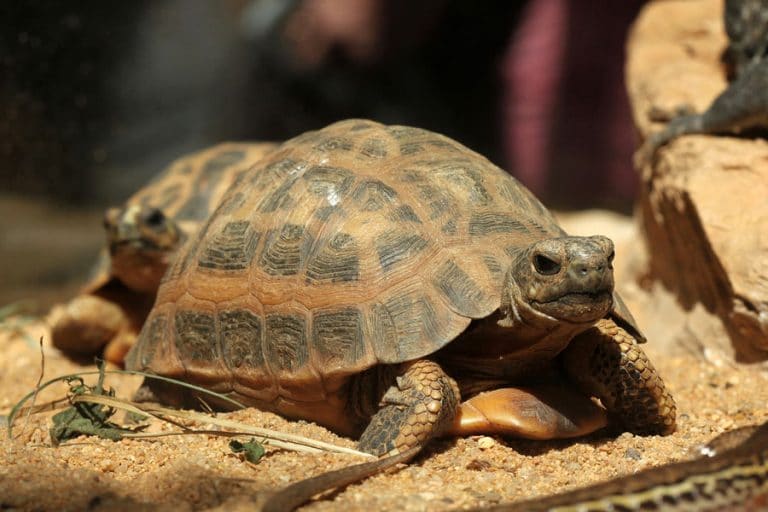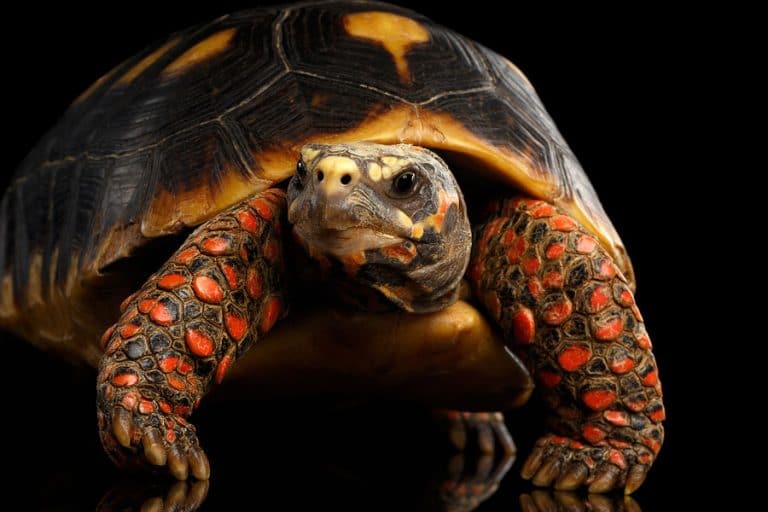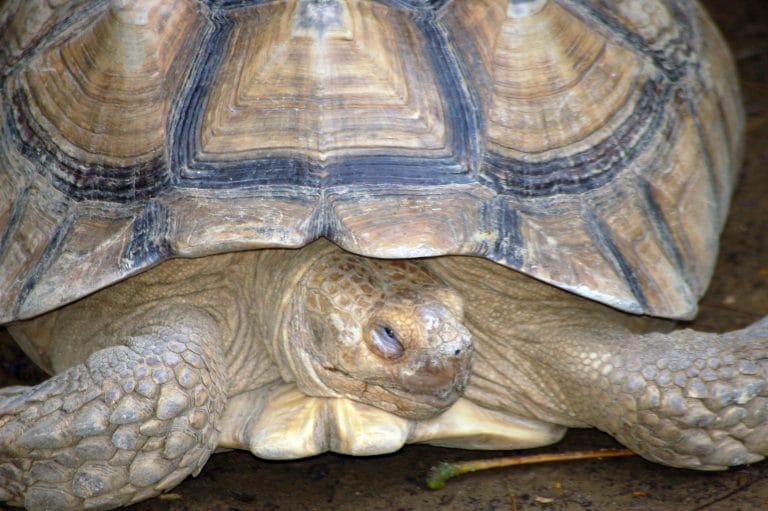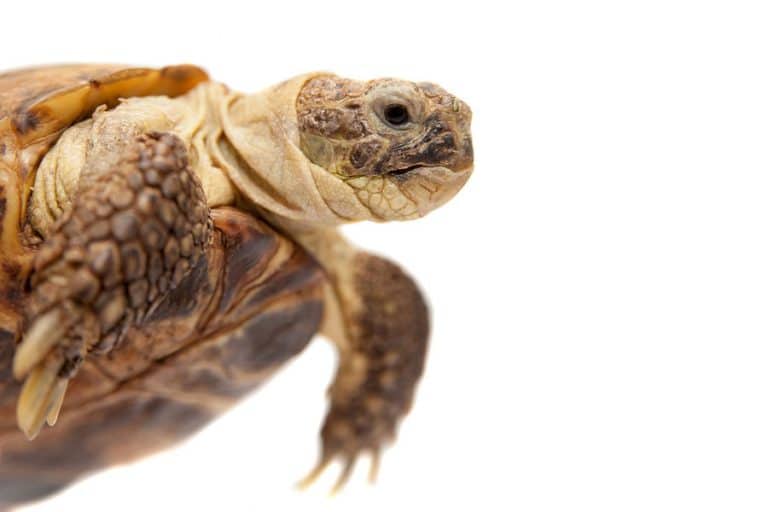African Pancake Tortoise
Scientific Classification
| Kingdom: | Animalia |
| Phylum: | Chordata |
| Class: | Reptilia |
| Order: | Testudines |
| Family: | Testudinidae |
| Genus: | Malacochersus |
| Species: | M. tornieri |
| Binomialname: | Malacochersus tornieri |
The African pancake tortoise (Malacochersus tornieri) has a flat-shell and inhabits Kenya and Tanzania. It earned its name from its flat-shaped shell. It is the solitary member of the species malacochersus. The biggest fear for the Pancake Tortoise is the unfortunate destruction of their habitat and excessive trading. This variety lives for about 25 to 50 years and it is robust.
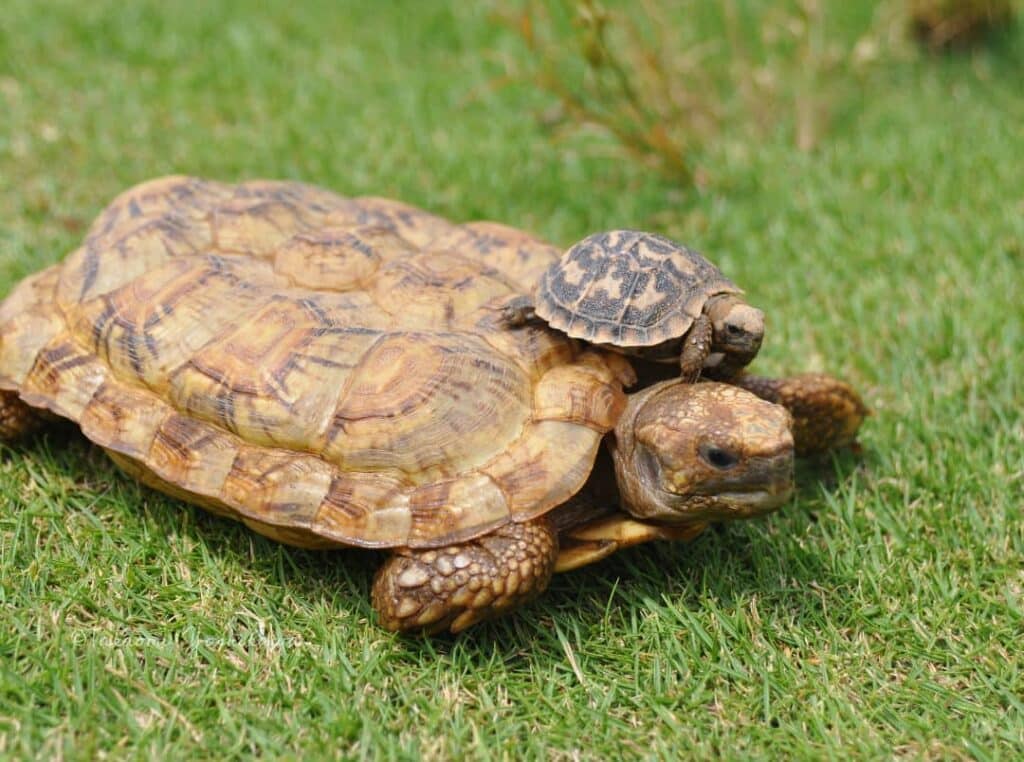
Anatomy
The structure of the pancake tortoise is flat extraordinarily thin and its shell is flexible and is 17.8 cm (7.0 in) long. They have shell bones with several openings that make them more agile and lighter when compared to other tortoises. The carapace (top shell) is brown, often with many designs of sparkling dark lines on every scute (shell plate), the plastron (bottom shell) is light yellow having deep brown joints and pale yellow rays and the tail, head and limbs are brown-yellow in clor. Its flattened weird, pancake shaped outline enhances its demand for secretive collections and zoological purposes.
Habitat
You can see this variety on the hillsides of rocky outcrops (known as kopies) and in Zambia, in the Savannas and thorny scrubs. It lives 30 to 1800m above sea level.
As a Pet
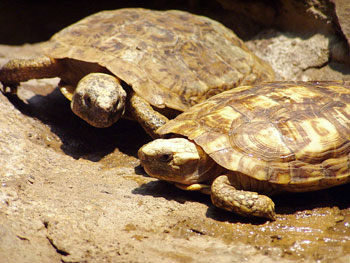
Pancake tortoises have, to an extent, a sociable and outgoing to nature. You need to breed them in reasonably sized groups; secluding grown up males is a good idea. These highly lively pancake tortoises need an enclosure of around 8 sq. Ft. of floor area.
Housing
Pancake tortoises adjust to living in stock tanks, commercial reptile cages, tailor-made enclosures, or pond liners. Provide these tortoise enclosures with a lip facing inward for preventing these wily turtles from making good their escape. Alternatively, provide a lid on top. It is difficult to breed these tortoise outdoors, especially in a variable climatic conditions.
Outside Housing
If you think of an outdoor housing, while setting up the enclosure, plant vegetation around the enclosure to provide their food needs, and provide many hiding spots. Prior to letting them outside, make sure that the enclosure is predator proof and escape-proof. Also shut the opening to prevent them from escaping, and think of providing a grating or mesh to prevent predators from intruding into the cage.
Substrate
Use slate tiles or carefully stacked and scattered staked stone slabs throughout the enclosure for providing climbing surfaces and to save their beak and nails from getting worn out. For substrate, use packed soil.
Temperature and Lighting
A ceramic heater keeps the enclosure dry and warm. For basking, fit a UVB lamp of 95oF. The African Pancake tortoise, used to dry habitats, does not like high-humidity and dampness, and does not live very long under these conditions.. If you, give them a shelter with a ceramic heat emitter in cooler periods, and since this variety is active.
Captive Diet
This variety of tortoise is herbivorous, dieting mostly on leafy weeds, fibrous grasses and greens. Your tortoise food should include a diet rich in calcium of high-fiber, and low-protein. Change their diet often, with lettuce blends, grocery-store, greens and “springs”. Also substitute them with grasses like Timothy, dandelions and Bermuda, etc. Give them a vitamin supplement. Provide a flat water dish.
Captive Breeding
At the time of laying eggs, the female African pancake tortoise becomes vigorous, on the lookout for a fit place to lay her eggs. The female needs a suitable egg-laying place, Hence mix an equal composition of damp coconut fiber and sand in a warm area of the enclosed space. The hatching rate of the eggs found in the damp substrate is higher than that on the carpet and in the sand.

Having discovered a fondness for insects while pursuing her degree in Biology, Randi Jones was quite bugged to know that people usually dismissed these little creatures as “creepy-crawlies”.

